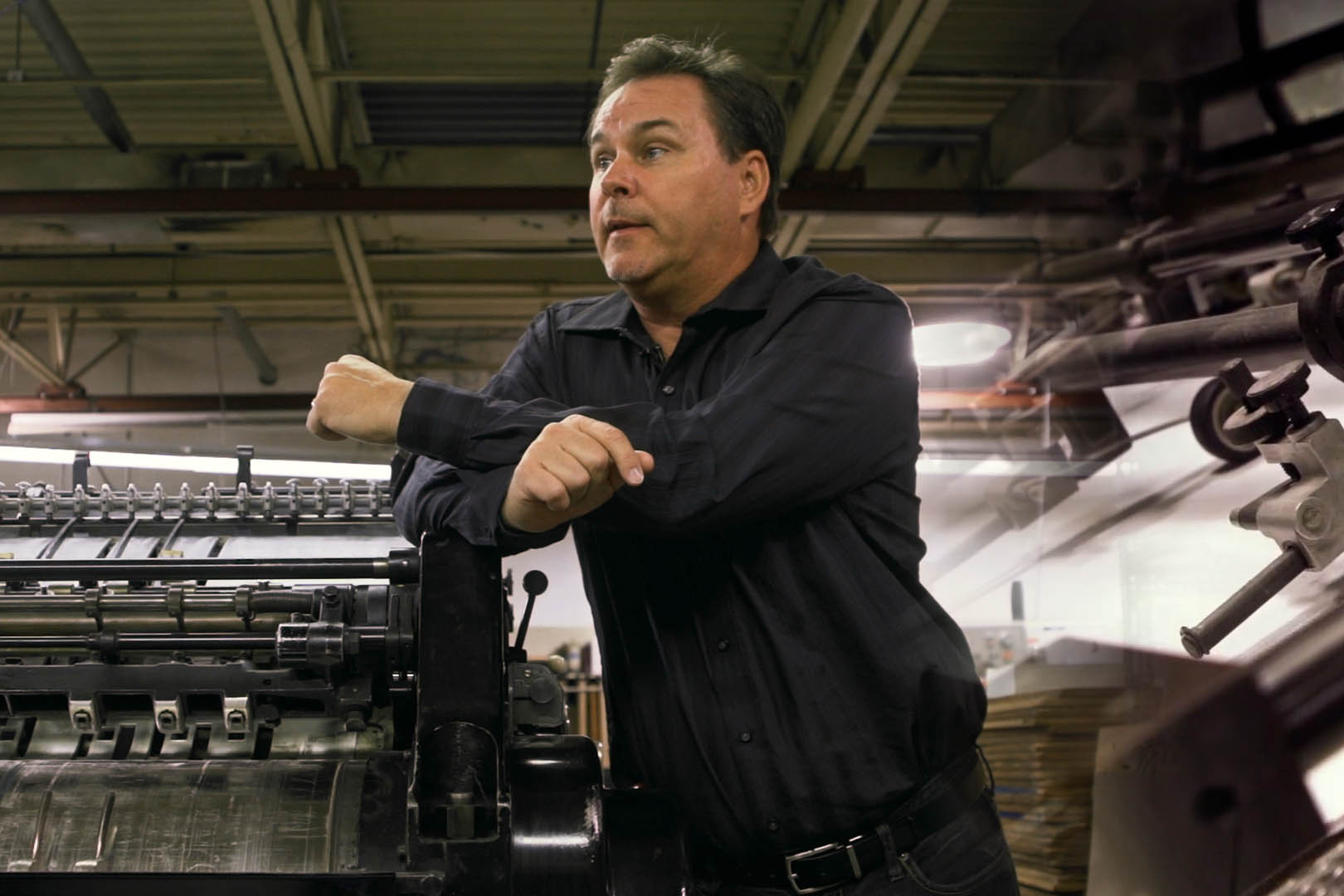

How It's Done:
NEON SIGNS
Grainger Everyday Heroes: Printer
By Grainger Editorial Staff 8/7/20
Meet Grainger Everyday Hero Michael Rink, President of Rink Printing Co., and his dedicated crew who help keep alive one of the most tangible ways of accessing information, putting ink to paper or plastic. Hear how for over 50 years, they've been running the presses so you can read that magazine on your morning train ride to work or look at that picture book you loved as a child.
My name is Michael Rink, I'm the president here at Rink Printing. We've been in business for about 52 years now. In this building we do primarily digital printing and across over there we have our offset department. Those two [types] are our primary printers, but this here is letterpress equipment that is used for the finishing of both the digital and the offset printing.
This machine I'm standing up against, which is still in daily operation, ironically, this is probably the oldest equipment in our shop. [It still] runs. It was probably built in the 1940s and 1950s and is still used every day. We do have to take time to shut [the equipment] down and perform regular preventive maintenance, [such as] oiling, cleaning [and changing] filters. We rely on our suppliers to [provide us with] good products in that regard too.
A new [print] job usually starts in pre-press on a regular Macintosh, it comes in disc form or is sent to us as a PDF. From there it moves into our proofing department. Once we receive the proof returns, they will then go to the appropriate area, whether it's digitally printed or offset printed. They're entirely different looking machines and it’s an entirely different [type of printing] process. Once the digital product becomes an offset job, it's put onto metal and run as ink, whereas a digital job runs as toners or different types of inks that are suited for digital printing. Once we the printing process [is complete], we come back to what you see behind me. These cutters are used before [anything is] printed and after the print [is complete because] quite often paper arrives oversized, and we have to cut it to the appropriate size. So [the paper] is cut first, then goes to the [printing] machines. After [the job is printed], it will either go to a machine like this that involves some dye cutting or possibly just some flat cutting like you see in the background there. Then [the completed job] would go to the bindery. [Binding] could be as simple as just wrapping it up, packaging it and putting it in a box, different finishing operations, it could be a number of things. Like I said, you can see where it could take an hour to [bind] or it could take a month.
Yes, printing has been a tough business to survive. I think at one point there was an excess of 15,000 printers in the United States. I actually think that number is down close to 5,000 or 6,000 now. With the advent of the internet and the digital revolution, printing took a big hit but it's not going away. There are also [many types of reading materials] that are still well-served by ink and paper and plastic. There are probably [many printed items] that people look at every day and maybe don't [think that much about] it. It's [because it’s] been second nature and around them since they were kids reading books in their bed. Ink on paper is all around us, but it really takes a lot of work to create some of the pieces that we have.
![]()
The information contained in this article is intended for general information purposes only and is based on information available as of the initial date of publication. No representation is made that the information or references are complete or remain current. This article is not a substitute for review of current applicable government regulations, industry standards, or other standards specific to your business and/or activities and should not be construed as legal advice or opinion. Readers with specific questions should refer to the applicable standards or consult with an attorney.






